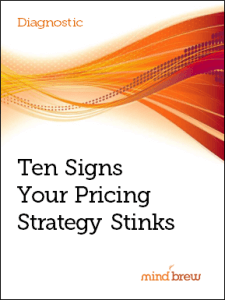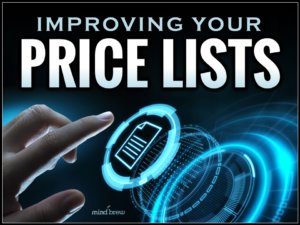If you asked any ten pricing practitioners what their biggest challenge is on a daily basis, the chances are pretty good that at least five—and maybe even all ten—would say something about their sales team.
In most B2B organizations, the pricing team can suggest prices, but the sales team has the final say in determining what a given customer will pay. And sales teams are generally highly competitive and driven to close as many deals as possible. They don’t want to lose a single sale because their pricing was perceived as too high, so when push comes to shove, they often disregard the guidance they’re getting from pricing.
Because the pricing team usually doesn’t have any direct control over the salespeople, they frequently feel that there is little they can do to stop salespeople from over-discounting. They may even resort to nagging the worst offenders, which is really one of the least effective ways to change human behavior.
But what if you could harness your sales team’s competitive nature for pricing purposes?
On numerous occasions, we’ve seen that publishing one simple report can work wonders for getting salespeople to do a better job with pricing. We call it the “closest to the pin” report, and it looks something like this:
In order to create this report, all you need are the target prices for the various deals that your salespeople did during the quarter and the actual prices customers negotiated. You then calculate a simple percent average for each salesperson. Put their names in order on a list and then distribute it to as many people in the company as possible.
The chart is deceptively simple—in fact, it may be one of the easiest reports you’re ever asked to create as a B2B pricing practitioner. But the effect can be astronomical.
In many cases, just knowing that someone is going to be looking at how close they are to target pricing is enough to motivate salespeople to stop excessive discounting. Being ranked on a list takes it a step farther, awakening their competitive spirits. After all, no one wants to be last on the list. And many salespeople will work surprisingly hard for the bragging rights that come with being at the top of the chart. If you want to motivate them even more, consider adding a “sweetener”— a small cash prize, trophy or gift that goes to salesperson who gets closest to the pin.
With this one simple report, pricing teams often get sales teams to change their pricing behavior dramatically in just a couple of months or quarters. If your pricing team is looking for a fast way to make a measurable difference on the company’s bottom line, this can be a great way to get a quick win.
Peer pressure and competition are powerful forces. If you can leverage them to motivate your sales team, you may be able to go a long way toward overcoming one of the most common obstacles to effective pricing.














